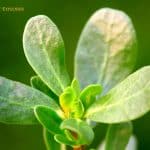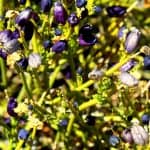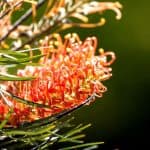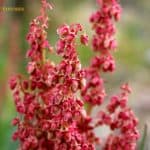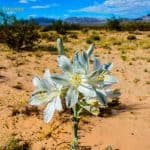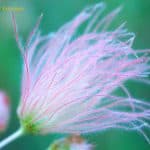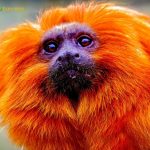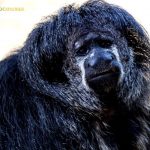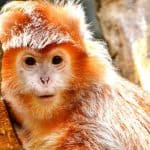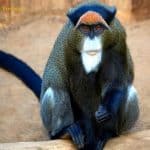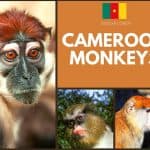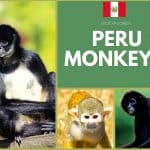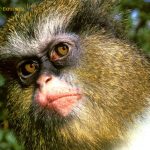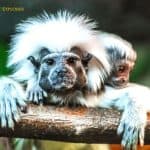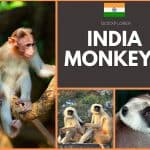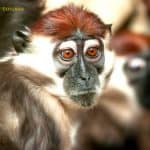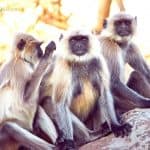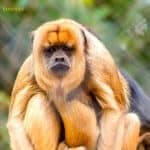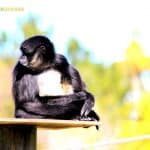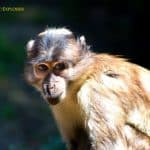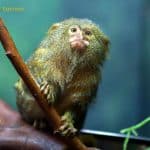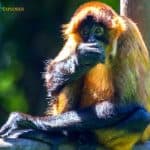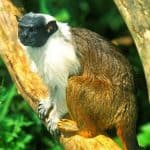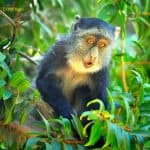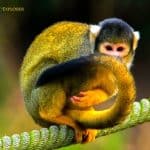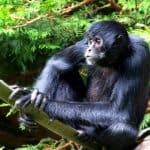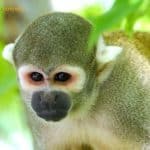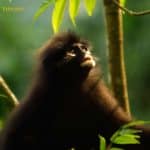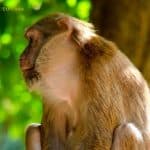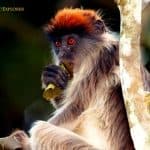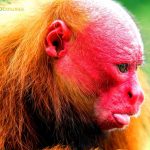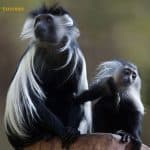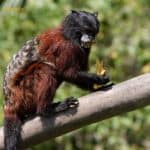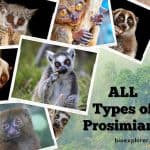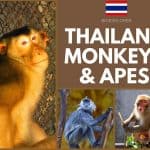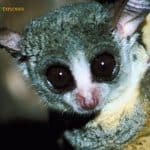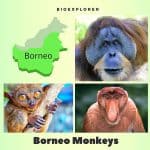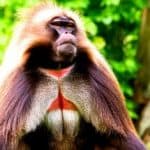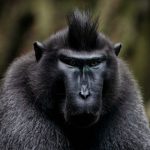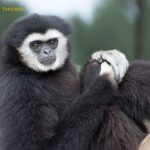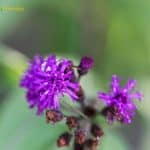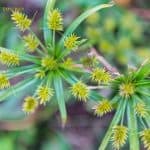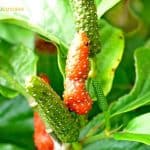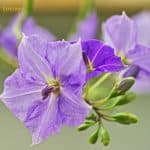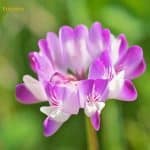types - search results
If you're not happy with the results, please do another search
Desert Horse Purselane
Triabthena portulacastrum is an annual herb of the family Aizoaceae. The Desert Horse Purselane is succulent and usually glabrous. The Desert Horse Purslane plant has been eaten for at least 2000 years.
Turpentine Broom
Turpentine Broom is a shrub of the family Rutaceae. This species is native to the southwestern United States and northern Mexico deserts.
Mount Finke Grevillea
Grevillea treueriana is a small shrub from order Proteales. The Mount Finke Grevillea plants are endemic to Mount Finke of Australia and can grow to a height of 2 meters. The flowers of the Grevillea treueriana are shaped like a toothbrush.
The Ultimate Guide to 25+ Spectacular Desert Flowers & Their Unique Adaptations
Desert Flowers: Approximately 1/3 of the earth's surface is deserts. Despite having prolonged periods without precipitation, severe temperature ranges, dry winds, and low humidity, the beautiful blooms of the desert have learned to survive the harsh environment and continue to bloom and provide colors to the desert.
Canaigre Dock
Rumex hymenosepalus is a perennial flowering desert plant belonging to the order Caryophyllales. The inflorescence of the Canaigre Dock is made up of elongated clusters of many small flowers in a reddish pink.
Desert Lily Flower
Hesperocallis undulata is the sole species of the genus Hesperocallis. Desert Lily thrives in the hottest and driest regions of the Southwest. The bulb of the Desert lily plant is edible. They have the same taste as garlic.
Apache Plume
Apache Plume (Fallugia paradoxa) is a hardy shrub native to the deserts of northern Mexico and the southwestern U.S. It produces simple, white, five-petaled flowers resembling small roses, followed by feathery pink seed plumes that look like a cloud.
Golden Lion Tamarin
The golden lion tamarin (Leontopithecus rosalia), also called the golden tamarin, is a small New World primate in the Callitrichidae family. The golden lion tamarin derives its name from its vivid reddish-orange coat and extra-long hair around its face and ears, giving it a distinctive mane.
Geoffroy’s Monk Saki
Geoffroy's monk saki, also called monk saki, is a species of saki monkey, a New-World primate native to South America. A monk saki is one of seven species of New-World arboreal monkeys with a bushy, feathery tail.
East Javan Langur
The East Javan langur, also called the Javan lutung, Javan langur, or ebony langur is an Old-World primate in the subfamily Colobinae. As with all langurs, the East Javan langur is a social animal, living in groups of about 7 individuals, with 1 or 2 adult males in the group.
De Brazza’s Monkey
De Brazza's monkey is an Old-World primate native to central Africa's swamp and riverine forests. It is the largest species of the guenon family and one of the most widespread African arboreal primates.
Cameroon Monkeys
The nation houses 20 different species of Old World monkeys, though none of them are endemic to the country. Main monkey species that can be found in Cameroon include the olive baboon (Papio anubis), the agile mangabey (Cercocebus agilis), and the red-eared monkey (Cercopithecus erythrotis).
Ecuadorian Monkeys
Ecuador is home to 21 species of New-World monkeys, though none are endemic to the country. Some examples of these monkey species include the red titi monkey (Plecturocebus discolor), the Colombian white-throated capuchin (Cebus capucinus), and the saddleback tamarin (Leontocebus fuscicollis). Explore all monkeys of Ecuador.
Democratic Republic of the Congo Monkeys
Democratic Republic of the Congo is also home to 35 Old World monkeys, with 18 endemic species. Some examples of these endemic species include the golden-bellied mangabey (Cercocebus chrysogaster), the wolf’s monkey (Cercopithecus wolfi), and the Ulindi river red colobus (Piliocolobus lulindicus).
Bolivian Monkeys
Bolivia is a South American landlocked country, known as the most isolated country on the continent. The nation is also home to 25 species of New World monkeys, though just two are endemic to it: the Beni titi monkey (Plecturocebus modestus) and the Ollala Brothers’ titi (Plecturocebus olallae).
Peruvian Monkeys
Peru is home to 52 species of New-World monkeys; 13 of the species are endemic to the nation. Explore all monkeys of Peru here.
Crested Mona Monkey
The crested mona monkey, also called the golden-bellied monkey, golden-bellied guenon, or crowned guenon, is a species of African primate in the Cercopithecidae family in west-central Africa. Like many species of Cercopithecus, the crested mona monkey has large cheek pouches that it fills with seeds and fruit while foraging for food.
Cotton-Top Tamarin
The cotton-top tamarin is another small New-World primate found at the edge of tropical and secondary forests in northwestern Colombia. The common names "cotton-headed tamarin" and "cotton-top tamarin" are derived from the white hairs that spread across the head and flow down the neck.
Brazilian Monkeys
Brazil is home to 131 species of Old World and New World monkeys, with 83 being endemic to the country. Some common examples of these species that only reside in Brazil include the red-handed howler monkey (Alouatta belzebul), the buffy-headed marmoset (Callithrix flaviceps), and the crested capuchin (Sapajus robustus).
Indian Monkeys
India has many cultural and religious ties with monkeys as a Hindu-dominant country. For instance, the Hanuman langur, one of India's most widespread monkey species, was named after Hanuman, a powerful part-monkey deity in Hinduism
Collared Mangabey
The collared mangabey, also called the white-collared mangabey or red-capped mangabey, is an Old-World monkey endemic to the Atlantic coast of central and west Africa. Its distinctive chestnut-red cap gives the species the name red-capped mangabey, and its white collar gives it the names white-collared and collared mangabey.
Kashmir Gray Langur
The Kashmir gray langur is an Old-World monkey, one of the species of langurs. The Kashmiri gray langur derives its scientific name, Semnopithecus ajax, from a character in the ancient Greek poem - The Iliad - set during the Trojan War.
Brown Howler Monkey
The brown howler monkey, also called the brown howler monkey, is a species of New World monkey that lives in the forests of southeastern Brazil and northeastern Argentina. Despite the common name "brown howler", its color is remarkably variable, with some individuals mainly appearing black or reddish-orange.
White-bellied Spider Monkey
The white-bellied spider monkey (Ateles belzebuth), also called the long-haired or white-fronted spider monkey, is an endangered species of spider monkey, a species of New-World monkey. These arboreal monkeys spend most of their time in the canopy. They rarely go down. When they do, they drink water, eat dirt, traverse a treeless area, or run away from an aggressive opponent.
Sooty Mangabey
The sooty mangabey, also called the white-collared or white-crowned mangabey is a predominantly terrestrial Old-World monkey. Sooty mangabeys remember the location of the fallen fruit and can tell whether or not a tree is bearing fruit.
Silvery Marmoset
The Silvery marmoset (Mico argentatus) is a New-World monkey living in the eastern Amazon rainforest of Brazil. True to its name, the silvery marmoset's body is a striking silver-grey color. Silvery marmosets are primarily arboreal species and can spend their entire lives in trees without descending to the ground.
Pygmy Marmoset (Finger Monkey)
The pygmy marmoset (smallest monkey), genus Cebuella (also known as Finger Monkey), is a small genus of New-World monkeys endemic to the tropical rainforests of the western Amazon Basin in South America. Pygmy marmosets are also highly territorial, using scent glands to mark territories of up to 100 hectares.
Central American Squirrel Monkey
The Central American squirrel monkey also called the red-backed squirrel monkey, is a squirrel monkey type native to the Pacific coast of Panama and Costa Rica. Central American squirrel monkeys spend most of their lives in the middle and upper layers of the tree canopy.
Brazilian Bare-Faced Tamarin
The pied tamarin, also known as the pied bare-faced tamarin or Brazilian bare-faced tamarin, has one of the smallest home ranges of any primate in the world, located in and around the port city of Manaus.
Blue Monkey
The blue monkey is a species of Old-World monkey endemic to east and central Africa, ranging from the upper Congo Basin east to the East African Rift Valley and south to Zambia and northern Angola.
Black Squirrel Monkey
The black squirrel monkey, also called the black-headed squirrel monkey or the blackish squirrel monkey is a small New-World monkey native to the central Amazonian region of Brazil. The black squirrel monkey closely resembles the much more common Bolivian squirrel monkey. However, the latter lacks the central black back.
Black Spider Monkey
Ateles paniscus, the black spider monkey, is one of three sub-species of spider monkeys. Aside from the face, feet, and hands, they are covered in jet-black hair longer than a typical primate. Of all the Ateles species, Ateles paniscus is the largest.
Bare-eared Squirrel Monkey
The bare-eared squirrel monkey also called the golden-backed squirrel monkey, is a subspecies of the Saimiri sciureus group native to the tropical forests and jungles of South and Central America. The bare-eared squirrel monkey differs from other species because it does not have ear tufts.
Barbary Macaque
The Barbary macaque, also called the Magot macaque, is a macaque endemic to the Atlas Mountains in Morocco and Algeria and a small introduced population in Gibraltar. Before the Ice Age, they inhabited the Mediterranean coasts and most of Europe, as far away as the British Isles and Germany.
Banded Langur
The Banded langur, also known as the Raffles' banded langur or banded leaf monkey, is a primate species in the Cercopithecidae family. Like other Colobin monkeys, whose young typically have lighter-colored fur than adults, Banded langur infants have white or tan fur until it darkens around 6 months.
Bald Uakari
The obscure Bald Uakari (Cacajao Calvus) is an acrobatic Amazonian monkey with a flaming red face uniquely adapted to periodically flooded forests. Surprising insights on its taxonomy, specialized seed-based diet, unusual social life, habitat flexibility, and urgent need to conserve diminishing flooded forest habitat across the Amazon Basin.
Top 15 Anatomy News of 2021
These 2021 noteworthy advancements and discoveries in Anatomy also speak to scientists' increased interest in the brain's structure, function, and disorders. Explore the top 15 anatomy and physiology news of 2021.
Assam Macaque
The Assam macaque, also known as Assamese macaque, is a macaque of the Old-World monkey family endemic to South and Southeast Asia. Assam is another state in India. Eating everything from fruits to 55 types of flowers, leaves, seeds, and bark, these macaque monkeys adapt their diet to suit their habitat.
Ashy Red Colobus
The Ashy-red Colobus or Ugandan red Colobus is an endangered species of red Colobus endemic to Eastern Africa. Like other colobus monkeys, Ashy Red has small thumbs that allow it to comfortably grip branches and swing nimbly through the canopy. In 2001, the ashy-red Colobus was recognized as a separate species.
Aracá Uakari
The Aracá uakari, also called the Ayres black uakari, is a newly described monkey species endemic to the northwestern Brazilian Amazon. The species was found by Jean-Philippe Boubli of the University of Auckland after following local Yanomamo Indians on their hunts along the Aracá River, a northern tributary of the Negro River.
Angolan Colobus
The Angolan Colobus is a conspicuously-patterned monkey with a very long tail that helps it maintain its balance as it moves quickly through the trees. Although the species is named after Angola, it's rare in this country.
Andean Saddle-back Tamarin
The Andean saddle tamarin, also known as the saddleback tamarin (formerly known as the brown-mantled tamarin), is a New World monkey species. Andean saddleback monkeys are considered "phyletic dwarfs," meaning their small size is related to their evolutionary development.
Prosimians
Prosimians are a grouping of primates currently made up of the species (both living and extinct) of two main taxonomic categories. Explore all types of prosimians here.
Thailand Monkeys & Apes
Thailand is home to 13 species of monkeys, though none of them are endemic to the country; quite a few can be found across Southern Asia. Other examples of common monkey species in Thailand include the Indochinese silvered langur, the northern pig-tailed macaque, and the rhesus Monkey.
Allen’s Galago
Allen's Galago, also known as Allen's Bush Baby, is one of more than 20 species of small and attractive arboreal primates are endemic to sub-Saharan Africa. Allen's Galago has enormous eyes that help this species adapt to a nocturnal lifestyle.
Malaysian Monkeys
Malaysia is home to various monkeys, though most are considered endangered. Some examples of these species are the stump-tailed macaque, the proboscis monkey, and the white-thighed surili.
Indonesian Monkeys & Apes
Indonesia is home to 12% of all known mammal species, many of which are endemic to the country. Indonesia is also widely known to house various types of monkeys, including macaques, surilis, and langurs.
Agile Mangabey
The Agile Mangabey is another Old-World monkey of the White-Eylid Mangabey group mainly found in swampy forests. Due to habitat loss, mangabeys are now listed as endangered, both male and female.
Borneo Monkeys & Apes
Borneo Monkeys: Borneo is the third-largest island in the world after Greenland and New Guinea. Borneo island hosts many types of monkeys & apes.
Brown Monkeys
Many brown-colored monkeys are classified as critically endangered by the IUCN. Most of the brown monkeys hail from South America. Brown Capuchin, Brown Greater Galago, Brown Howler, Brown Lemur, brown mouse Lemur, Brown Titi, Brown-backed Bearded Saki, and Brown-mantled Tamarin are a few examples of different types of brown monkeys.
Black Monkeys
Explore the intriguing world of black monkeys in our comprehensive guide. Discover their species, unique traits, habitats, and survival tactics.
Abbott’s Gray Gibbon
The Abbot's gray gibbon, also known as a western gray gibbon, is an acrobatic primate of the gibbons' family, Hylobatidae. Abbott's gray gibbons are very small and light. The Abbott's gray gibbon was named after zoologist William Louis Abbott.
Vernonia
The Vernonia genus includes 350 species of shrubs and forbs in the Asteraceae (sunflower) family. Some species of Vernonia are also known as ironweed. Vernonia plants have small purple flowers gathered in loose clusters, making them popular cut flowers.
Cyperus
Cyperus is a large genus of around 700 sedge species distributed across continents in temperate and tropical regions. The greenish flowers are wind-pollinated, generally produced in racemes between the apical leaves.
Peperomia
Peperomia is one of the two main genera of the Piperaceae family. Most are small, compact perennial epiphytes that grow on rotten wood. Over 1,500 species have been recorded in all subtropical and tropical regions worldwide. Typically, Peperomia flowers appear in brown, yellow, or green conical spikes.
Miconia
Miconia calvescens, also known as miconia, bush currant, or the velvet tree, is a plant species in the Melastomataceae family. The genus contains around 4 species, with Miconia calvescens being the most well-known of the four. The flower heads are large panicles with white to pale pink flowers.
Ardisia
Ardisia (marlberry or coralberry) is a genus of plants in the Primulaceae family. It was part of the ancient Myrsinaceae family, now recognized as the Myrsine family. The Ardisia genus includes more than 700 recognized species of flowering plants. Usually, the flowers have 4 or 5 green sepals and a bell-shaped crown of 4 or 5 pink or white petals
Piper
Piper is an ecologically and economically important genus of the Piperaceae family. It includes around 1,000 to 2,000 species of lianas, herbs, and shrubs, many of which are dominant in their natural habitat. The Piper flowers bloom in early summer. They are slightly purple to white in color and hang in a bell shape.
Solanum
Solanum is a diverse and large flowering plant genus that includes 3 food crops of great economic importance: eggplant, tomato, and potato. The Solanum genus now contains around 1,500 to 2,000 species of plants. Its flowers are available in white, lavender, and dark purple.
Astragalus
Astragalus is a genus of more than 3,000 species of small shrubs and herbs that belong to the Fabaceae (pea) family and the Faboideae subfamily. The flowers are formed in clusters; each flower is typical of the Fabaceae family, with 3 types of petals: keel, wings, and banner. The pea-like flowers can be white, pink, pale blue, or purple.


